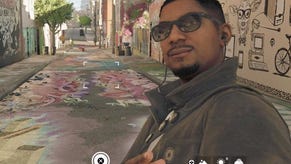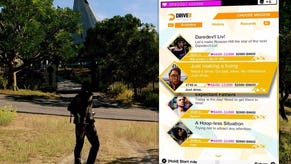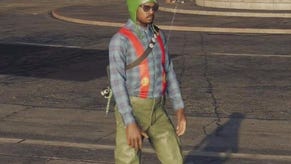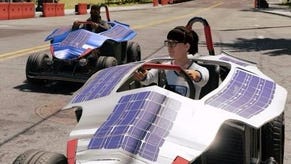Watch Dogs 2 successfully ditches Ubisoft's towers for a fresh, fun open world
Scripts and giggles.
It's no secret that Watch Dogs 2 is a departure from its predecessor. It's been obvious for a while, just from glancing at trailers, that this sequel will be brighter and more playful than Ubisoft's previous crack at a hackable open world. Now, after nearly four hours with the sequel, it's clear there are big changes in how it feels, too.
Back at E3 in June I spoke with Watch Dogs creative director Jonathan Morin. He made a bold promise. "There are no towers," I remember him stating. "You just explore." I'll be honest - hearing this about a Ubisoft-made open world didn't really compute. Far Cry games, Assassin's Creed, Watch Dogs 1 - they all follow the same map-clearing template of climbing/claiming/hacking/setting fire to a tower (or inhaling at a campfire if you're Far Cry Primal) to reveal more of the map and uncover fresh quest icons to hoover up. Was Ubisoft really about to jettison all of that?
Watch Dogs 2 doesn't do anything revolutionary with its progression systems - there's an XP bar which tracks your deeds by awarding you Twitter-style Followers and a quest log reminiscent of a to-do list on your in-game mobile phone. They are systems cribbed from any RPG, but which feel right at home as you progress. Activities sprout up as you explore and poke at the world. Purchase a snazzy pair of trousers? You'll get some Followers for that. Vandalise a big old billboard with a Donald Trump-alike's face up on high? You'll get some more. It's this system which sends new boy Marcus Holloway on further adventures around the San Francisco bay, with fresh things to see and do popping up once you hit milestone levels of social media reach. There are no towers. To put it simply: you just explore.
"We wanted to break a formula we felt was being used too much," senior producer Dominic Guay told me after my time with the game was up. "In Far Cry, in Watch Dogs, in Assassin's... it works - but we felt we wanted a structure which rewarded players for exploring the world instead of a structure where you got the feeling you needed to scrub the icons from the map. You feel like that's your only job, and yet humans don't work that way. If I'm exploring Paris, I'm going to look at a map and go straight to Notre Dame. It's the same in [Watch Dogs 2] - we value the places over the icons."
Remember what I said about trousers? Starting the game, Marcus needs a fresh pair (you can find out why yourself). Amusingly, that's your first mission of Watch Dogs 2, but it's also one you can put off for as long as you want. Setting off from your starting location, sun shining over San Francisco bay, I instead drove the opposite way and looped the whole map. I fast-travelled over to Alcatraz, did a spot of sightseeing, took a drive around Silicon Valley and passed Noodle (read: Google) headquarters. Eventually it was time to pick up those pants and move the story forward, but simply driving round the map let me find plenty of points of interest along the way.
That's not to say the main story is worth ignoring - far from it. It's hard to think of another open world which so successfully skewers some of the technological stories and themes of the present day. While Grand Theft Auto's bloody antics often clash with its childish sense of humour, Watch Dogs 2 pitches itself as a more light-hearted affair, with a younger group of characters who themselves delight in mischief. "If you're spending 60 hours in a game you want a varied tone," Guay adds. "A 10 hour game, sure you can do a noire experience. We still want topics which are serious, but balance it by having a group which is younger and a bit more optimistic."
The game's opening sets Marcus out as a good guy - one who is more likely to use his billiard-ball-on-a-string melee weapon than an assault rifle, although both options are available. But while Watch Dogs 1's gruff loner Aiden Pearce looked like the sort of guy who'd keep a spare AK in his trenchcoat pocket, Marcus Holloway does not. Not only is it not his style, it's also far from necessary thanks to the wider range of gadgets at his disposal. There's the RC car which can unfurl itself to hack and operate things at a distance - and if caught will not get immediately cause Marcus to become detected. There's also the new drone (also excellent for selfies) for getting an overview of an area from up high.
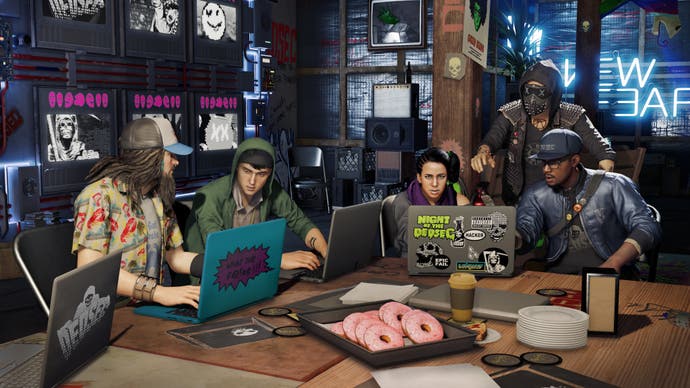
Early missions see you creeping into a Hollywood studio set to steal a Knight Rider-style talking car, hacking a crane to access and graffiti a towering billboard, and prank calling a devious billionaire to trick him into donating money to charity. It's still early days - we didn't get to delve into anything too serious, or explore Marcus' own backstory, which may yet offer up darker paths. But already I feel myself warming to Watch Dogs 2's team, a mix of personalities which includes an autistic character who, pleasingly, is presented as more than just a caricature.
Again, you'll be infiltrating tech company headquarters and invading people's privacy via stealth and hacking mechanics, although the latter remains in the realm of 'press X to hack' rather than anything more cerebral. Still, when you're racing down the freeway in the car from Knight Rider hammering buttons to get the police off your tail, you don't want anything more. Most importantly, I was racing down the freeway in the car from Knight Rider. I wasn't gunning people down with a trousered assault rifle because of super serious reason #2. I was exploring, and I was having fun.
I recorded plenty of my time with the game which you can view here throughout this article - there's a look at the size and scope of the world map, as well as the stunningly-reproduced Alcatraz. Perhaps my favourite, though, is this look (put together by Ian) at how well Watch Dogs 2 parodies real life - including a lovely dig at everyone's favourite peripheral Kinect.
This article is based on a press event in Paris. Ubisoft paid for travel and accommodation.








